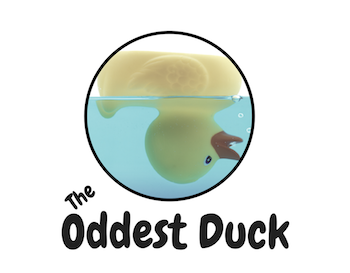Note: This is the second part in a series on Autism.
People assume I’m intelligent. It’s like a default setting – Linda is “friendly,” Bob is “assertive,” Chris is “smart.” I guess it’s the way I carry myself. A few months into my first professional job, I’d earned enough distinction to be assigned an extremely important task. Proud of the accomplishment, I remember a woman, arms crossed and scowling, whispering to her friend. “I don’t see what’s so special about him.”
Ouch. But, it was a rare moment of honesty, a reminder that not everybody sees me the same way.
At times, my mind processes things so quickly that others are in slow motion. Other times, I’m probably the most clueless person in the world. There’s an emerging theory from brain imaging studies that promises to explain this seeming paradox.
In other words, the pathways between sections of the brain that are straight and clear for neurotypicals (NT’s) are like mazes, vine-covered trails or hidden crevices for those on the autism spectrum. However, like a blind person’s sense of hearing, activities using a single section of the brain may be enhanced.
Imagine the average person drives some kind of SUV. In that world, I’m driving a special-edition Lamborghini, cut about an inch above the ground. Aerodynamic and sleek, I can blow most people away — as long as the road is smooth, mostly flat, and relatively undamaged. If there are potholes or a dirt road, I’m barely moving.
Life’s roads are rarely smooth.
For someone on the spectrum, rough roads are when multiple parts of the brain have to be engaged simultaneously. Being in crowds where lots of people are talking at the same time. Loud dance halls or parties. Unexpected situations. Because communication between parts of the brain are disrupted, the information is processed more slowly or not at all, making social interaction awkward or impossible.
By contrast, tasks that don’t require as much interaction between sections of the brain (or use more familiar, practiced paths), are processed much faster. What one lacks in social awareness or graces, they might make up for with innate math abilities, computer skills, musicianship, or some other proficiency.
That is, if they’re lucky enough to have the support to find their special skills. For those on the more extreme end of the spectrum and unable to communicate, it’s far more difficult.
Autism is a spectrum. Meaning, some are obviously autistic, unable to function independently in society. Many are like me and live a relatively normal life. And most are somewhere in between. What makes us the same is the way our brains are wired differently than NT’s; what makes us different is likely the extent our wiring is disrupted.
I’ve simplified the science here — a lot — but I hope it helps you understand the difficulties autism presents.
Temple Grandin thinks in pictures. Owen Suskind was nonverbal until his parents found he responded to Disney characters. A children, both were at risk of being left behind, lost and alone in their minds. But when someone took the time to figure out how to communicate with them, they blossomed, and the world gained their unique and powerful voices.
To help someone with ASD, you can’t simply lower a rope and tell them to grab hold. You have to climb down into the hole and work with them to find a way out.
Next, I take on why autistic behavior itself makes it hard to get the help we need.



1 Comment
Asperger’s, Autism and Me – The Oddest Duck
Jun 12, 2017